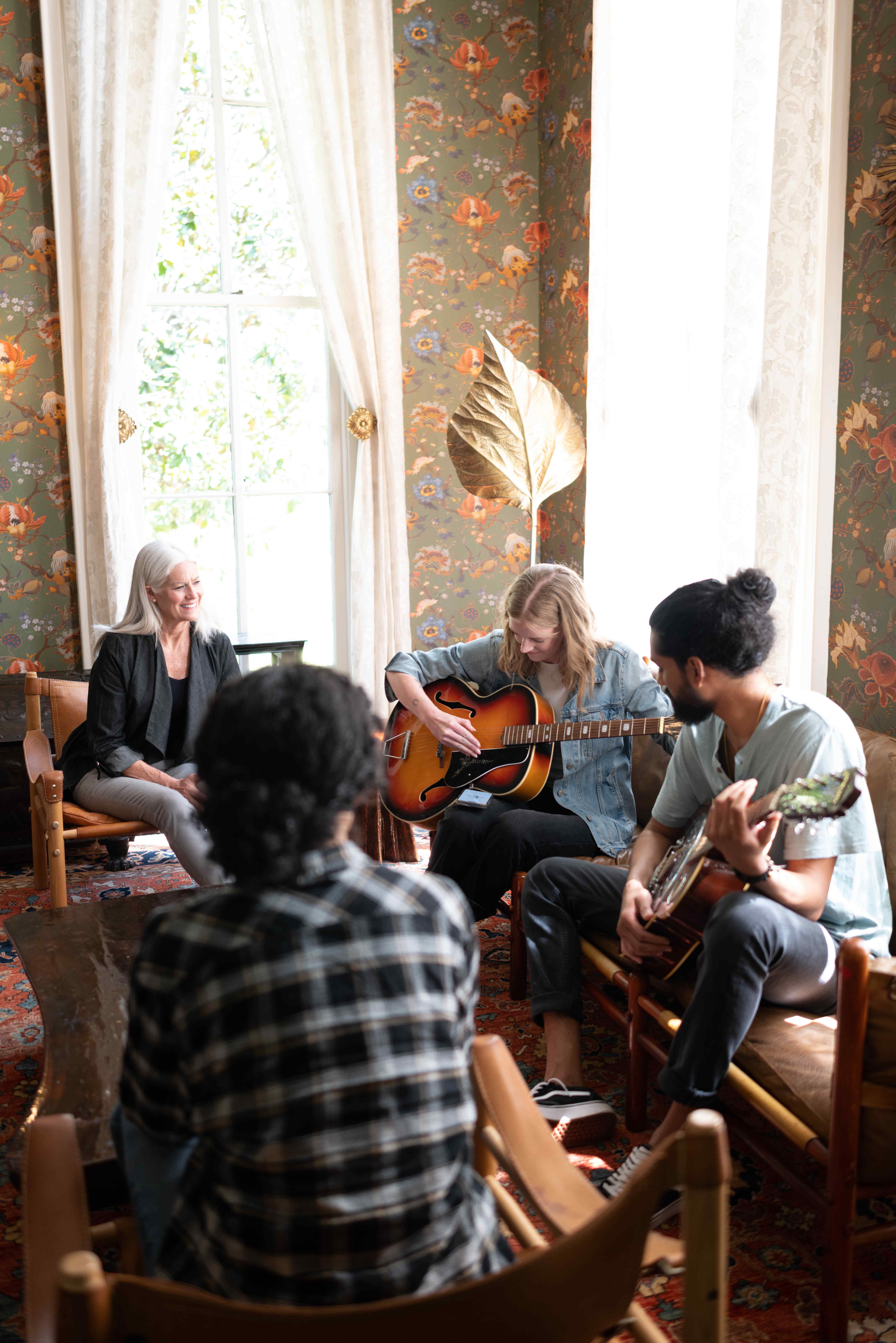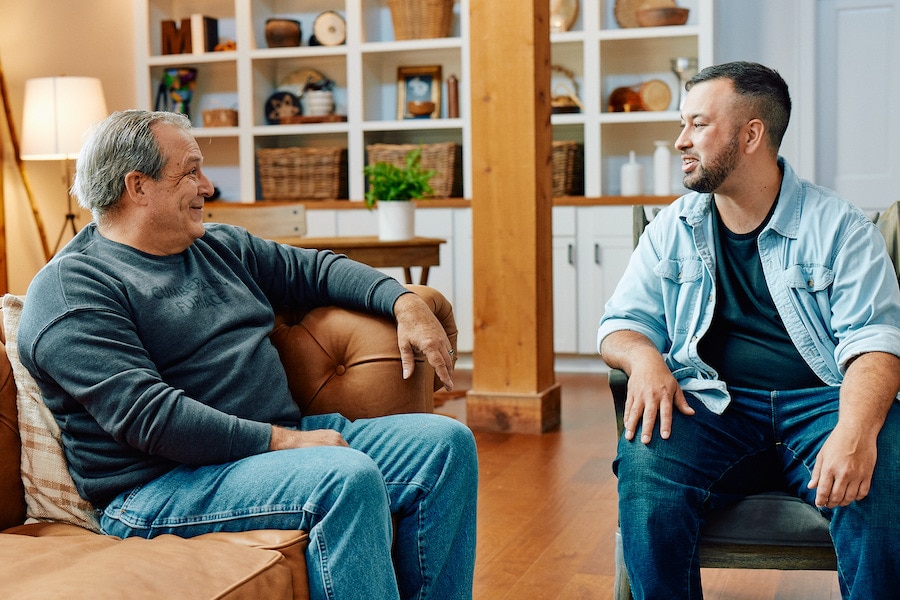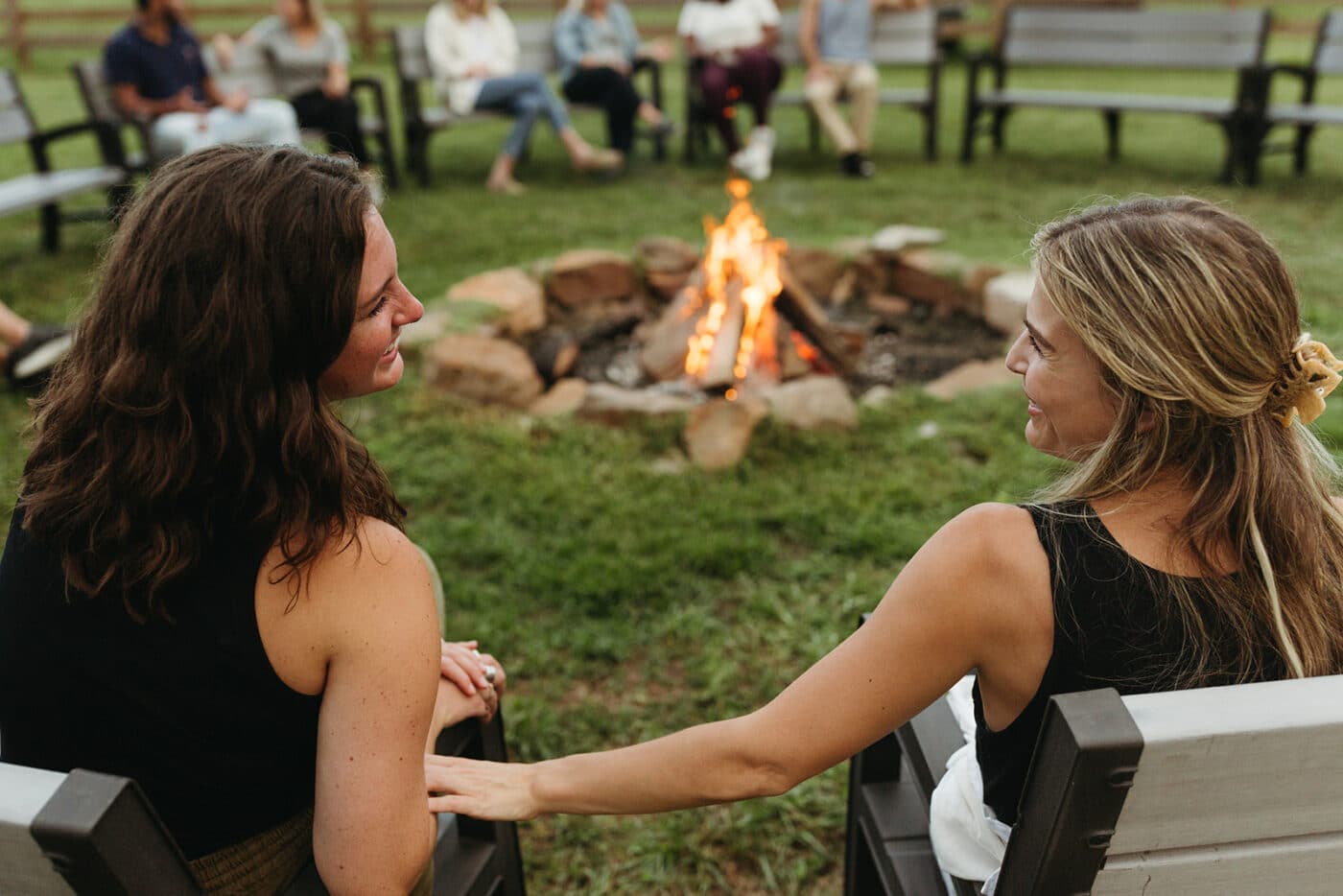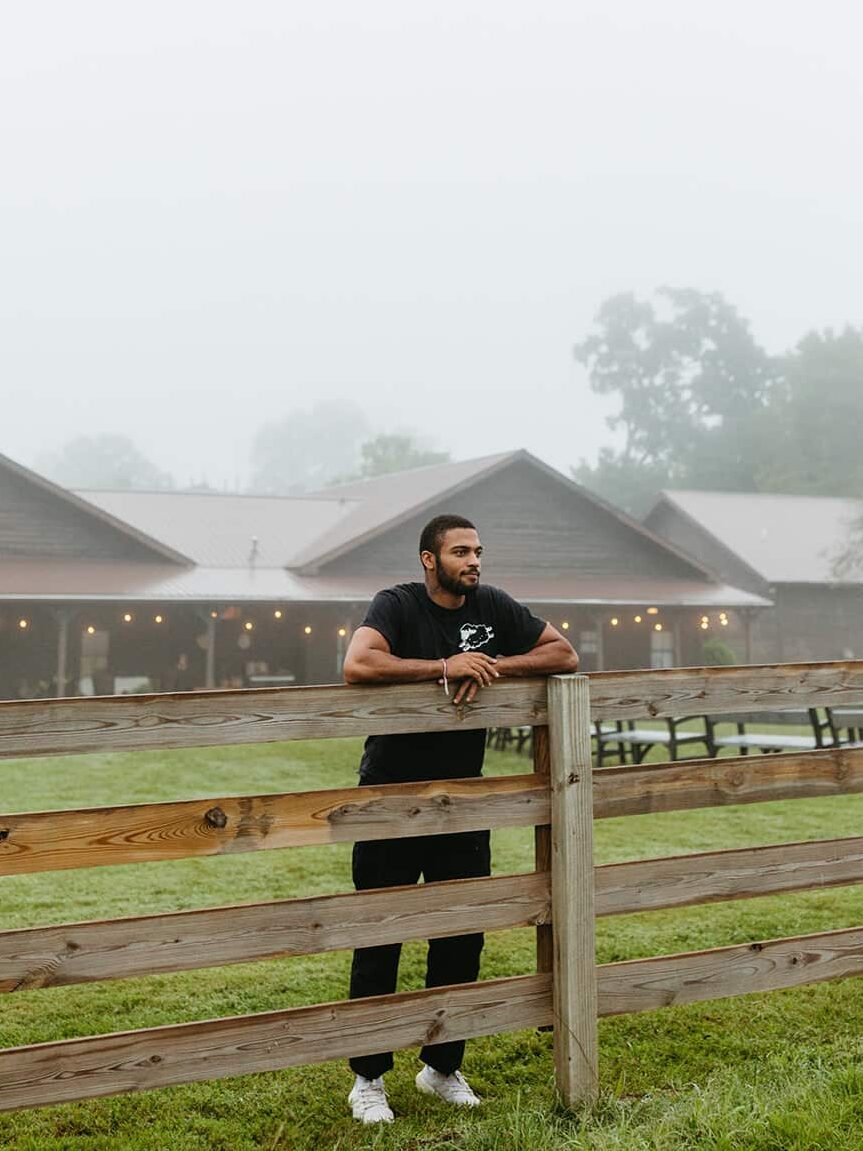#Trauma: What We’re Getting Wrong
5 experts weigh in on what we get wrong about this trending topic.
An excerpt from the Onsite Journal Vol. 3
———————–
Lately, it is hard to read a headline, pick up a book, or scroll through social media without seeing something about trauma. A topic that was once limited to mental health circles, trauma has now made its way into our common vernacular and conversations. Trauma is trending.
While the conversation around trauma has made significant shifts over the last decade, many of us still carry misconceptions about what trauma is and how it shows up in our lives.
As trauma experts, the team at Onsite works to destigmatize mental health and help people gain a better grasp on the impact their past can have on both their present and their future. We all face adversity, and for many of us we struggle to label that adversity as trauma. To help us better understand and explore the reality of trauma and its impact, we’ve reached out to five of Onsite’s world-renowned clinicians to share the misconceptions they encounter in their work with clients.
Carlos Martinez, Lead Clinician at Onsite
Carlos has been in the helping profession for over 20 years, and now he leads Onsite in-person workshops and intensives on topics like trauma, healthy sexuality and relationships, intimacy, and connecting with the self.
Misconception: What I experienced wasn’t that bad.
Reality: Naming our trauma is some of the hardest work we’ll do.
Many clients at some point in their work with me have said, “I mean…it’s not like what happened to me was that bad. Was it?” This is usually delivered in earnestness through a hopeful voice and eyes. They want confirmation that what they’re describing doesn’t carry a label they’re not comfortable with.
I understand that need to confirm. I would sit on my therapist’s couch, talking about the experiences I had growing up, and in the midst of talking about the things I have lived through, I would ask her, “Does it really count as ‘abuse’? I mean, other people had it much worse.”
It makes sense why we tell ourselves it wasn’t that bad. Because if we were to admit that it was bad, we would need to shift our perspective, maybe get mad at someone, or set a boundary. We might have to come to terms with what happened, which Scott Peck says is some of the hardest work we do in therapy.
It can be terrifying to name something. Often to name it is to make it real. So, it becomes much safer for our internal world to say, alternatively, that it just wasn’t that bad.
Know this: if you are struggling with naming something from your past, it is supposed to be difficult, to come to terms with it. I would encourage you to consider that comparing your story to someone else’s may not be useful or helpful as you try to determine what is true about your story. Because someone else has been injured doesn’t mean your wounds or scars don’t exist. Listen to what your body is telling you about your experience and let it guide you through what it needs, and what it needs to be recognized. Our first eyewitnesses many times are ourselves, and in seeing something for the first time, we can tell others about our journeys and invite them along the way with us.
Kristine Jackson, Clinical Director at Onsite
Kristine has been helping people wade through their stories and find breakthroughs for decades. She joined the Onsite team after several years as a contract therapist leading Onsite groups and intensives and now leads our clinical training efforts for Onsite professionals.
Misconception: Time heals all wounds.
Reality: We need to take time to heal our wounds.
Often trauma impacts our understanding of time. The experience feels like it happened yesterday, or a thousand years ago. Both can feel true because on the way our brain organizes the narration of the traumatic experience and the emotional sense of the experience in two different places in the brain, and those two places could not be farther apart.
Our brains are designed without a clock, and after we experience something traumatic, we quickly learn to be on alert. Even if the original source of trauma has vanished from our lives, or it has been decades, left unaddressed, trauma keeps us in the state of awareness. Our protection instincts will make the experience feel recent and relevant; and this vigilance leads to a phenomenon sometimes referred to as “trauma time”.
There is evidence – from both field and lab-based studies – to suggest that the memory distortion follows a particular pattern: People tend to remember more trauma than they experienced, and those who do tend to exhibit more of the “re-experiencing” symptoms associated with post-traumatic stress disorder (PTSD). In addition, traumatic memories are stored differently and are encapsulated in unmetabolized form in the limbic region where time has no meaning. Yet the body remembers. No amount of time will heal the painful impacts of past trauma that continues to hijack our present. While all memory is bendable, traumatic memory follows a particular warp.
Trauma time can rob us of the moment, as we live in an alert state from the past and in the fear of the future. This is why, to be effective, therapy must go to the source: to help develop skills for staying centered, self-aware and having agency over the overwhelm in a safe way through experiential therapy. The trauma was an experience, so having a powerful healing experience helps us get “unstuck”. We can work through the feelings in a secure environment and add presence to present day perspective, all of which engenders true safety. Connection within the self and within a support network will create the space for lasting healing.
Christopher O’Reilly, VP of Clinical Services at Milestones
Christopher has an extensive career running residential and outpatient programs specializing in trauma, addiction treatment, and detox. He now oversees all activities of Milestones.
Misconception: Trauma only impacts me mentally.
Reality: Trauma can impact mental, emotional, physical, and spiritual health.
One of the most common misconceptions regarding trauma is related to the overall impact it can have. I don’t believe most people understand that trauma can impact almost every aspect of life. Trauma can impact mental, emotional, physical, and spiritual health. I also believe that a great deal of trauma related symptoms are overlooked or misdiagnosed because professionals might not fully understand the complexity of trauma. Often the focus is on treating symptoms, not necessarily looking at cause of the symptoms.
Trauma can have a profound impact. The way someone thinks about themselves, and others can shift, going from trust to distrust. There can be an increase in emotional distress that is difficult to regulate, sometimes disconnecting a person from reality. The nervous system can become activated for extended periods of time which reduces the physical body’s ability to rest and repair, creating chronic physical conditions. There can be an experience of hopelessness and disconnection from meaning and faith.
The real challenge is that individuals who experience the impact of trauma might not be aware of the complexity thus they don’t get the help they need. Symptoms such as fatigue, inability to get restful sleep, or a constant stomachache might not lead someone to obtain the kind of treatment they need.
Kathleen Murphy, Onsite Guide
Kathleen’s career is founded on over 35 years of experience working with people suffering from substance abuse issues complicated by relational trauma and attachment wounding. She now provides leadership to Onsite programming and therapists.
Misconception: Trauma is what happened to you.
Reality: Trauma is what is happening to you.
Often, we say that trauma is an injury. But what is injured?
Without this understanding what was injured, it is almost impossible to understand how to heal. When you injure your arm— even if you do not understand the physiology of an arm— you do know its location and function. You would know where to look for the injury and you would know what was impaired.
Trauma is not an event that is back there somewhere. The problem with looking back to the event is that it does not accurately describe the injury any more than focusing on why or how you broke your arm would heal the fracture.
The fracture is not in the event, but rather in the actual injury of your body. Bessel Van Der Kolk poignantly says: “Trauma is not the story of something that happened back then,” he adds. “It’s the current imprint of that pain, horror, and fear living inside people.”
It is the seemingly recurrent suffering experienced in the here and now – in the current sense of self and relationship. It is not in our heads, it’s in our bodies. When we experience trauma, the injury takes place in our nervous system and our brains.
Trauma is not what happened to us in the past, but rather what continues to happen to us in the present based on the injury we’ve sustained.
The brain and the nervous systems are designed to give us accurate information about ourselves and our environment so that we can move away from danger and towards safety. Especially the safety of community and connection. It is evolutionary adaptive for us to for relationships within community.
Therefore, an injured or wounded nervous system is a big deal. One of the most hurtful things for us in having a traumatized nervous system is that we begin to misread ourselves and our environment. In order to heal trauma, the experiences in our bodies happening in the present, we must find healing in the context of community and utilize tools that help us deal in the here and now. We gain the awareness to recognize when we are in a state of alert and learn to use our breath and one another to calm and wait.
Austin Houtaling, Onsite Guide
Austin has worked in the trauma and addiction field for the last 15 years. He completed his Ph.D. in Marriage and Family Therapy at Texas Tech University with an emphasis in addiction treatment and systemic trauma and is a Licensed Marriage and Family Therapist. Austin has extensive experience in intensive experiential therapy and personal growth programs focusing on emotional intelligence and relational improvement for individuals, couples, and families. Austin also led Onsite’s clinical team for over 5 years.
Misconception: The “worse” the event, the greater the impact of trauma.
Reality: The impact of trauma is directly correlated to how it affects your nervous system.
When we think of trauma, we often think of events – war, abuse, neglect, etc. We assume the “worse” the event, the greater the impact the trauma will have on an individual.
However, Trauma is more about how an event or experience registers or “lands” in your body, and how it impacts your nervous system. There are many examples of people that have experienced horrific things that do not develop physiological trauma symptoms or diagnoses such as PTSD.
Conversely, there are people that go through experiences or interactions with people that to some might not be traumatic, but that still develop physiological trauma symptoms. It is important to recognize that traumatic symptoms can result from any number of life experiences and that the way that individuals process and internalize these experiences are varied.
The variation in individuals’ responses to painful life circumstances or experiences or interactions is dependent on many factors. Our attachment styles, belief systems, biology, societal and cultural context in which the experiences or events take place, multi-generational factors of resilience and chronic stress, support system, and the speed with which we are able to process or share the event with another safe person, all impact the way adverse life experiences effect us.
———————–
If you’re struggling with the effects of trauma, Onsite is here to support you. Onsite has worked diligently to create in-depth experiences that address the emotional pain, compulsive behavior cycles, and disconnection that follow a traumatic experience from our digital classes, in-person experiences, and Milestones our one-of-a-kind residential trauma program.

























